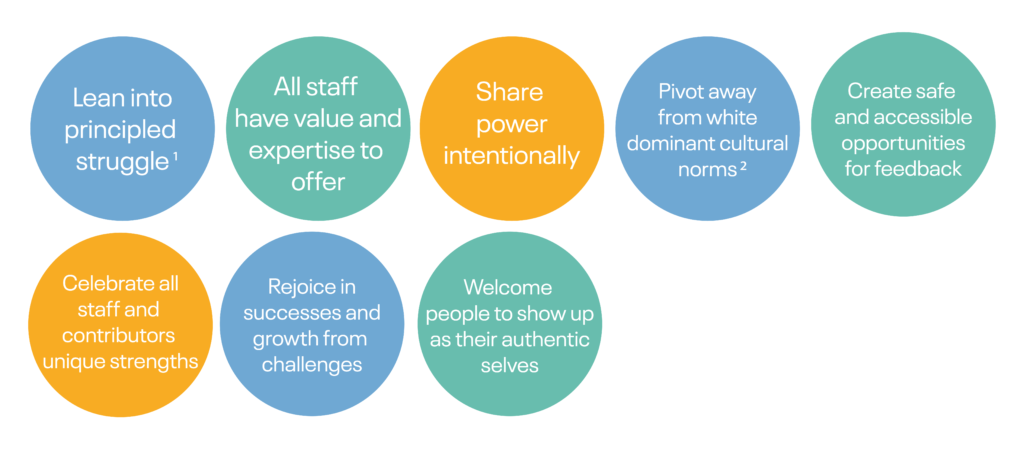Aspirational Values
The aspirational values reflect ways in which HSH can transform its culture and day-to-day practices of how the organizational members relate to each other.

Notes
(1) Carruthers, Charlene, 2019. “The Three Commitments”. The Crisis Magazine. December 9, 2019. https://www.thecrisismagazine.com/single-post/2019/12/09/the-three-committments
(2) Okun, Tema and Kenneth Jones, 1999. “White Dominant Culture & Something Different: A Worksheet.” https://www.cacgrants.org/assets/ce/Documents/2019/WhiteDominantCulture.pdf
(3) Breakaway, 2017. “Do We Need Safe or Brave Spaces?”. BreakAway. December 1, 2017. https://alternativebreaks.org/safe-or-brave-spaces/
(4) Zheng, Lily, 2016. “Why your brave space sucks.” The Stanford Daily. May 15, 2016. https://www.stanforddaily.com/2016/05/15/why-your-brave-space-sucks/
(5) Limbong, Andrew, 2020. “ Microaggressions are a big deal: How to talk them out and when to walk away”. National Public Radio. June 9, 2020. https://www.npr.org/2020/06/08/872371063/microaggressions-are-a-big-deal-how-to-talk-them-out-and-when-to-walk-away
(6) Smith, Kad 2017. “Race Caucusing in an Organizational Context: A POC’s experience” Compasspoint. April 6, 2019. https://www.compasspoint.org/blog/race-caucusing-organizational-context-poc%E2%80%99s-experience
(7) Blackwell, Kelsey, 2018. “Why People of Color Need Spaces Without White People.” The Arrow: A Journey of Wakeful Society Culture & Politics. August 9, 2018. https://arrow-journal.org/why-people-of-color-need-spaces-without-white-people/